(Steve once won at hide and seek by hiding in a clothes drier for over an hour.)
If you are short on space, then you need to increase your productivity by efficiently using what little space you have. Here are some things you can do to maximize your space.
1. Plant small productive plants
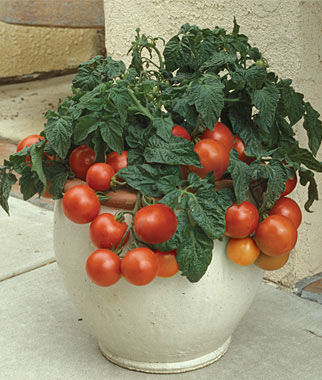
If you are short on space then you do not want to plant a watermelon that only produces one or two fruits, but takes up 36 square feet. Stick to plants like tomatoes, peppers or bush beans that can produce all season long and only take up 4 square feet or less. (The above link is an affiliate link, which means I earn some commission from purchases you make from them, thank you. 🙂
2. The Tomato Potato
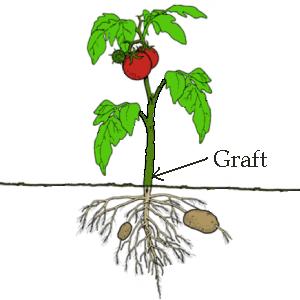
![]()
![]()
You can graft a tomato plant onto the root stock of a potato. This will give you twice the produce in the same space. Here is a good article on how to do it. http://togetherfarm.com/how-to-grow-tomatoes-and-potatoes-on-one-plant/
3. Companion Planting
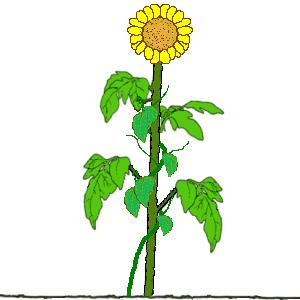
Companion planting is a technique of planting plants with a symbiotic relationship close together. Sometimes these symbiotic relationships can save space. For example, you can plant your pole beans next to your sun flowers. The beans will crawl up the sunflower. Here are some companion planting guides that should give you more guidance:
http://www.thekitchenpantry.net/2014/growing-vegetables-summer/
4. Vertical Gardening
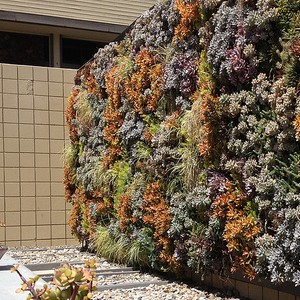
There are many varieties of vine plants which can be planted close together and trained up a trellis. Tomatoes, cucumbers, melons, squash, and beans are some examples. Another thing you could do is invest in things like Gro-Wall which help you grow anything vertically. You can also use things like pallets and rain gutters as planters on a vertical surface, like shown here.
5. Container Planting
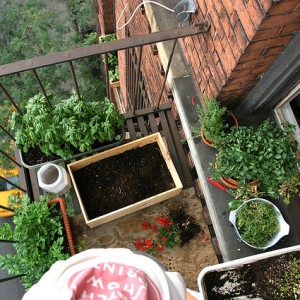
Most all vegetables and some trees can be grown in a container. This way you can grow your pants in non traditional areas like a porch, window sill, roof or indoors. Make sure that your container is big enough for the root system. For trees it is advisable to grow dwarf varieties. When moving your containers, be careful to slowly introduce your plants to a drastic change in environment or a large increase/decrease in the amount of sunlight. Lastly, containers are more susceptible to cold, so make sure to bring your plants indoors during freezing temperatures.
6. Rooftop Gardening
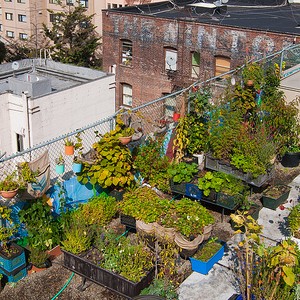
Rooftop gardening can be done if you do not have enough space in your yard. If your roof is sloped, you can either build terraces or plant in containers. Make sure you think about how you are going to get water to your plants. You will also need to put up wind breaks, if you live in a windy area.
7. Grafting
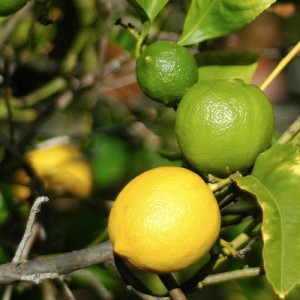
As seen above with the lemon and lime tree, grafting can be used to have one root stalk support multiple varieties of fruit. The varieties have to be closely related and compatible. For example nectarines, peaches, and apricots can all grow on the same tree. Usually, this is done at the nursery. (I will teach you do this later) Fun Fact – most nurseries graft whole trees onto different root stalks to take advantage of a hardier more disease resistant root system.
8. Many Tree one Hole
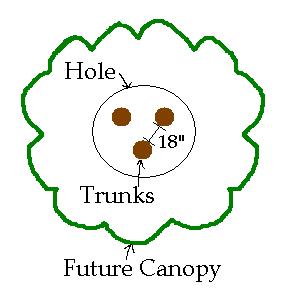
You can actually plant more than one tree in one hole. This will cause some root and nutrient competition, which will only reduce the size of your trees. Isn’t that what you want anyway? Just make sure to compost or fertilize to make up for the nutrient competition. Also, make sure the trees are at least 18” apart so they have room to grow.
9. Hedgerow
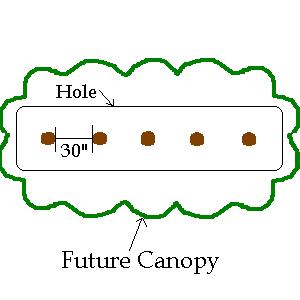
Hedgerow planting is similar to planting multiple trees in one hole, but instead you plant them in a row and leave more space between the trunks. 30 inches is a good distance. This saves space, but you will have to prune carefully, so the trees don’t beat each other up on a windy day.
10. Espalier
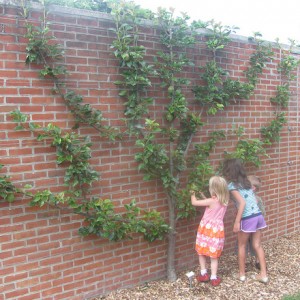
This technique is more of a pruning technique. With proper pruning you can train a tree to be flat. This means you can plant close to a wall or fence and just strap the tree to it to save space. (I will teach you how to do this later)
*Bonus* – Combining Techniques
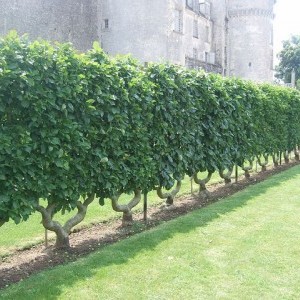
You can combine these techniques. In the photo above, they are using both Hedgerow planting and Espalier pruning for their apple trees. By using multiple techniques you can creatively make the most of your space.
Tell me, what space saving technique is your favorite?
References
Productive Plants
https://www.plantvillage.com/posts/717-general-most-productive-vegetables-for-limited-space
Vertical Gardening
http://www.uvm.edu/pss/ppp/articles/vertgard.html
http://inhabitat.com/grow-up-designing-vertical-gardens-for-tiny-spaces/
Rooftop Gardening
http://www.gardeningknowhow.com/special/urban/creating-your-own-rooftop-garden.htm
Growing Fruit Trees in Containers
http://www.crfg.org/tidbits/container.html
http://www.raintreenursery.com/growingfruitincontainers.html
Tree Space Saving Techniques



Thank you for the ideas and good links!
Your welcome!
The Tomato Potato was a great idea. I had never thought about this. Thanks
I haven’t tried it yet, but I want to.